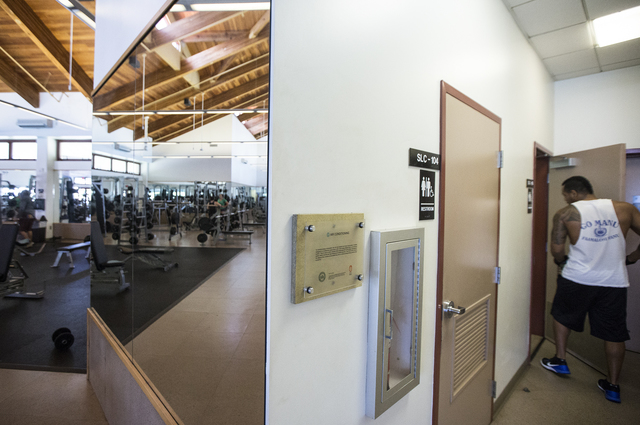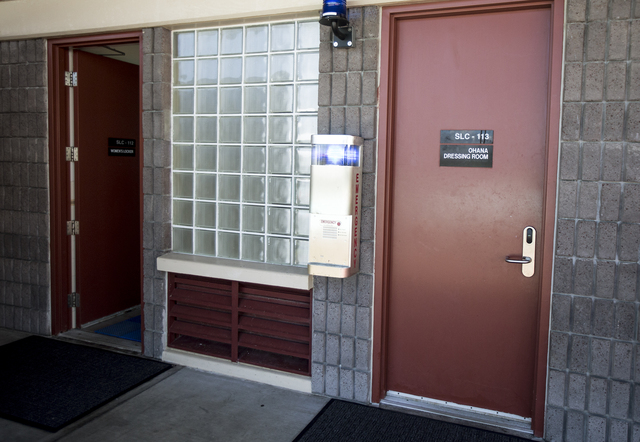An “all-gender” bathroom movement at the University of Hawaii’s flagship campus has been “the norm” at UH-Hilo for years, campus administrators say.
This week, UH-Manoa announced it had converted nine, single-stall bathrooms to all-gender with ADA accessibility in an effort to better accommodate transgender students.
UH-Hilo, however, has included all-gender restrooms in all of its new construction projects since at least 2008.
There are currently about 35 all-gender, single-stall bathrooms on the Hilo campus, located in eight of its roughly 40 buildings, Lo-Li Chih, UH-Hilo director of facilities planning, said in an email.
The campus also has converted existing restrooms to gender-neutral in all renovation projects “when feasible.”
“This is just common-sense practice to address the needs that is becoming an issue,” Chih said.
UH-Hilo began its bathroom conversions at least eight years ago. It was part of a “gender equal access issue” brought initially to the campus Committee on Access, Chih said. The committee provides school leadership with guidance on complying with federal accessibility standards.
It’s unknown how many transgender students are enrolled at UH-Hilo. However, Hawaii has among the highest percentage of people who identify as transgender in the country, according to a July study by the Williams Institute at the UCLA School of Law. Around 0.8 percent of the state’s adult population identifies itself as transgender, the study shows, or about 8,450 people. Nationally, that number is about 0.6 percent, or 1.4 million people.
UH-Hilo staff and students told the Tribune-Herald that gender-neutral facilities haven’t caused any problems. Junior Sean Quinlan said he hasn’t really noticed them or “given them much thought.”
“I don’t think there have been any issues at all,” he said.
“The school is really good about the gender equality (issue),” added 19-year-old Gabby Sanborn. “We’re super OK with things like that. We have several students who are transgender, and they go to the bathroom they choose, and no one’s ever said anything about it. Everyone’s super cool with it.”
Director of Campus Recreation Tim Moore said all-gender facilities have been used by the community, too. For example, an all-gender “ohana” changing room at the Student Life Center — a campus recreation building — has been used by parents needing to help their young children of the opposite sex change their clothing, he said.
The Student Life Center was built in 2008 and also includes two all-gender bathrooms.
“I think it’s the trend for the future,” Moore said. “Making any of our facilities more adaptable is the way to go so that you can use them how they’re needed. I think that will be the trend not only for universities but airports and different things. They’ll start looking at the concept of gender neutral so that it’s more accommodating for more people.”
UH-Hilo leaders say there are no plans as of yet to convert or construct any all-gender bathrooms with multiple stalls.
Hawaii Community College has four unisex restrooms on its Hilo campus and two at its Palamanui campus.
UH spokesman Dan Meisenzahl said community colleges systemwide are “in the process of identifying bathrooms and then it’s just a matter of (changing) signage.”
“And in any future buildings across the UH system, those plans would include all-gender,” Meisenzahl said.
The gender topic made national headlines in April, when Target announced a new policy which allows transgender individuals to choose their preferred bathroom. The retail giant has since encountered a storm of backlash. This week, the company announced it would be spending $20 million to install single-stall, gender-neutral bathrooms in all of its stores.
Later in the spring, the Obama administration issued federal guidelines directing public schools to allow students to use the restroom which best corresponds with their gender identity.
Hawaii’s Department of Education also adopted this year a set of “transgender guidelines” directing schools to give students access to restrooms that “correspond to their sincerely held gender identity.”









